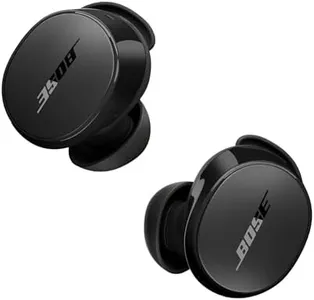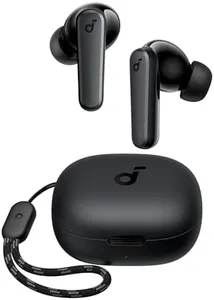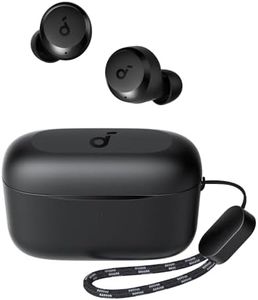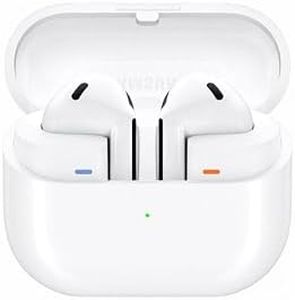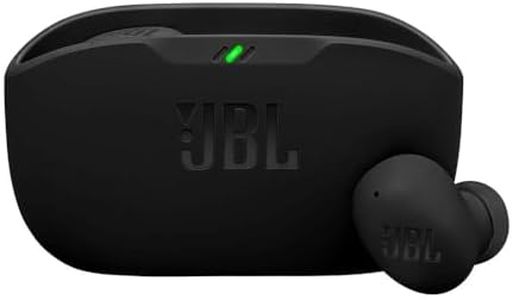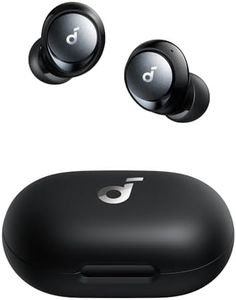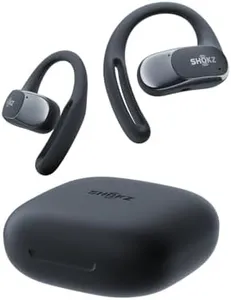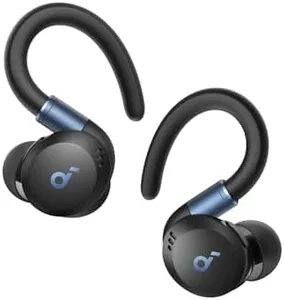We Use CookiesWe use cookies to enhance the security, performance,
functionality and for analytical and promotional activities. By continuing to browse this site you
are agreeing to our privacy policy
10 Best Earbuds
From leading brands and best sellers available on the web.Buying Guide for the Best Earbuds
Choosing the right earbuds can make a big difference in your listening experience, whether you use them for music, calls, or while exercising. Since everyone's needs and preferences are different, it's important to look at the main features and think about how they match your lifestyle and usage habits. Understanding what the main specs mean and how they impact your experience will help you select earbuds that fit you best and make your purchase a satisfying one.Sound QualitySound quality is about how clear and enjoyable the earbuds make music, voices, and other audio sound. This is important because it affects how much you enjoy listening. Earbuds with higher quality audio often provide richer bass, clear vocals, and crisp details. Sound quality often varies from basic models with average sound, to mid-range models with balanced sound, and premium models that provide deep bass and detailed sounds. If you mostly listen to podcasts, you might not need top-end audio fidelity, but if you love music or want an immersive experience, look for models with better sound quality.
Comfort and FitComfort and fit refer to how well the earbuds stay in your ears and how comfortable they feel during long use. This is crucial if you wear them for hours at a time, during exercise, or on the go. There are generally universal-fit earbuds, those with interchangeable ear tips, and ergonomically shaped or over-ear designs. Smaller, lighter earbuds may suit people with smaller ears or for workouts, while those who need a secure fit for running or commuting may prefer models with extra stabilizers or hooks. Try to pick earbuds that match your ear size and how active you are when using them.
Battery LifeBattery life tells you how long the earbuds can last on a single charge, and often also includes the extra power the case can provide. This is important if you want to use them for long periods without charging. Some earbuds last just a few hours per charge, while others can go up to eight or more, with cases that give multiple recharges. If you use earbuds throughout the day or sporadically without easy access to charging, look for longer battery life both in the earbuds and the case. For quick trips or light use, shorter battery life might be fine.
Noise CancellationNoise cancellation is a feature that reduces background noises, making it easier to focus on your music or calls. There are two main types: passive (just the seal of the earbud blocking sound) and active (electronic technology that cancels noise). Passive works well for low noise, while active is better for places like planes or busy streets. Decide how much outside noise you want to block. If you travel a lot or use earbuds in noisy places, consider active noise cancellation. If you’re usually in quiet areas, passive may be enough.
ConnectivityConnectivity is about how the earbuds link to your devices, usually through Bluetooth. The strength and reliability of the connection affect audio quality and call stability. Basic Bluetooth versions may work shorter distances and be less stable, while newer versions offer fast pairing, longer range, and lower chance of dropouts. If you often move away from your device or want seamless switching between devices, look for earbuds with newer connectivity specs and features like multi-device pairing.
Controls and FeaturesEarbuds offer different controls and extra features, like touch controls, voice assistants, and water resistance. Controls can be physical buttons or touch-sensitive surfaces, which affect ease of use, especially when on the move. Features like water resistance are important for workouts or use in the rain. If you want hassle-free operation, pick earbuds with simple, easy-to-use controls and features that suit your daily routine.
Call and Microphone QualityCall and microphone quality determine how well your voice is picked up and how clearly you hear others during calls. This is crucial if you use earbuds for work or frequent phone calls. Some earbuds have noise-reducing microphones or multiple mics for clearer sound. If you make calls in noisy places, look for models promoted for call clarity or with microphones designed to filter out background sounds.

